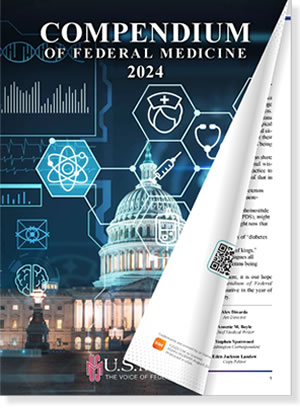Conditions Weren’t Optimal
“We were not working in optimal conditions and we had to compensate for that. Thank the lord we had a very low number of infections among our employees,” Wilkie said. “But we don’t want to face another situation where I come and tell the chair that it’s not optimal.”
According to MacDonald, VA has enough testing supplies in place to track infections in the VA system—something that was lacking in the first months of the pandemic.
“Due to multiple vendors and planning, we have an adequate supply of tests at this point,” she said. “We proactively work on pieces that are more challenging in the global supply chain, such as nasal swabs an the transport media used to move the specimens to the test site.”
“We’ve tested 125,000 veterans, just over 11,000 of whom have been positive,” she added, “Most of those [have] recovered or are in a convalescent status. More than 76%. Most of our veterans are also able to be monitored at home. As we’re able to encounter this illness early it gives veterans and their families a better chance of being able to fight this.”
She added that any employee who is symptomatic, fears they may have been exposed, or who asks for a test can receive one.
Legislators also inquired about the allocation of the $19.6 billion directed to VA in the CARES Act. As of May 27, only $2 billion of that amount had been obligated.
Asked whether that didn’t seem like a particularly slow rate of allocation, VA’s Chief Financial Officer Jon Rychalski said that, considering the unique circumstances, it was difficult to answer that question.
“Is that slow? We really don’t have a precedent to compare,” Rychalski declared. “We’re creating the baseline today. We’re finding many things out.”
The antiquated accounting and purchasing systems used at VA does not help matters, he added. “We had to go through the federal procurement process, and that takes a little bit of time. We have an old accounting system, so not everything is real time. I I expect to see [the amount spent] to grow substantially as we resupply.”
Legislators asked Rychalski whether VA needed additional emergency funding included in future bills. He told them that, while VA was adequately funded from a medical perspective, we couldn’t say what would happen if infections spike again.
One thing the department could use was more latitude in how the money is spent, he said. “We could use some additional transfer authority. There are a couple of areas where we probably did not think through where we needed [funding].”
That includes expenses from VA’s community care programs.
“We need authority to keep paying our community care bills,” Rychalski said. “We have a legal ruling that we are probably not in compliance with in procurement law. If we don’t get [transfer authority] we’re going to be short about $5 billion for community care.”

